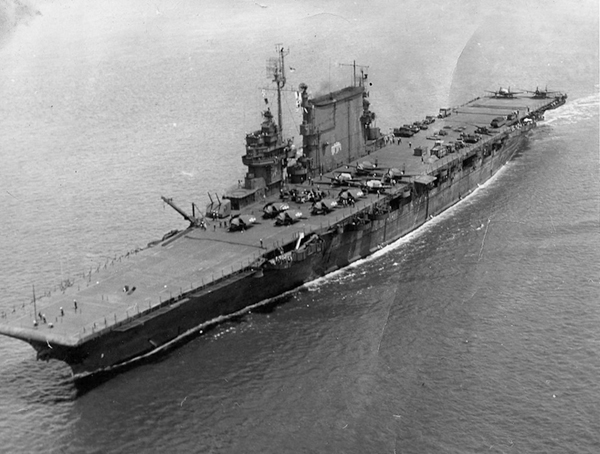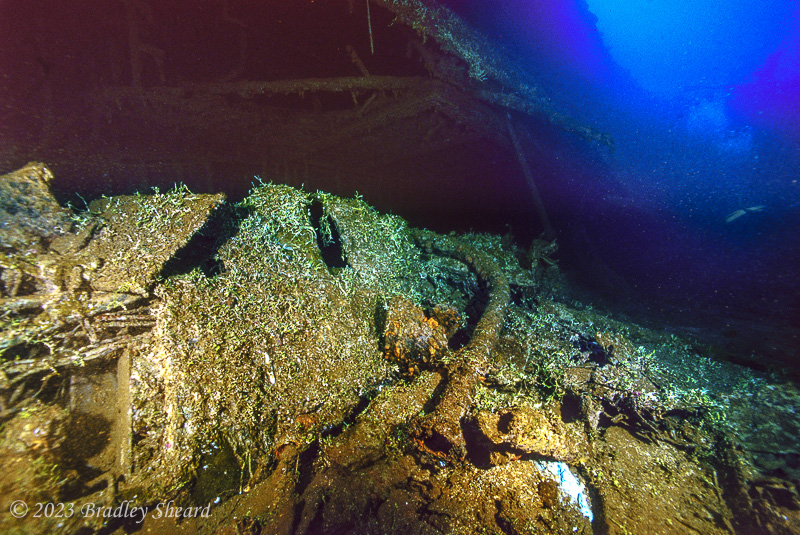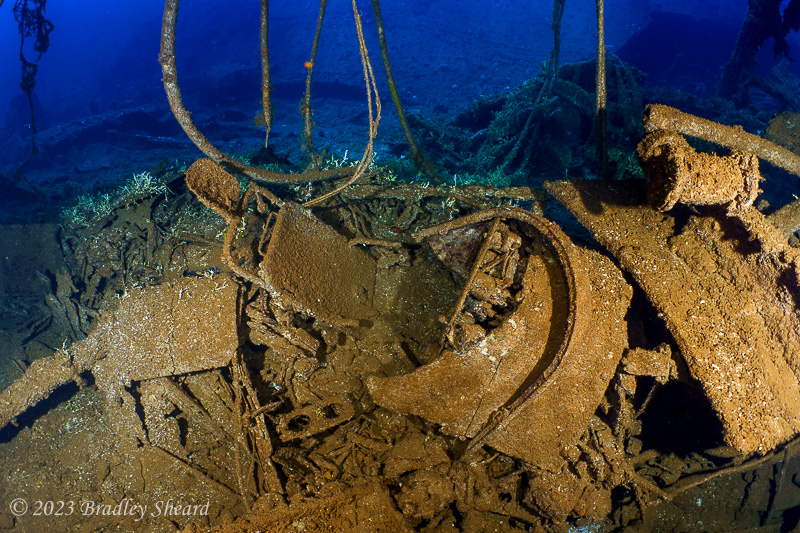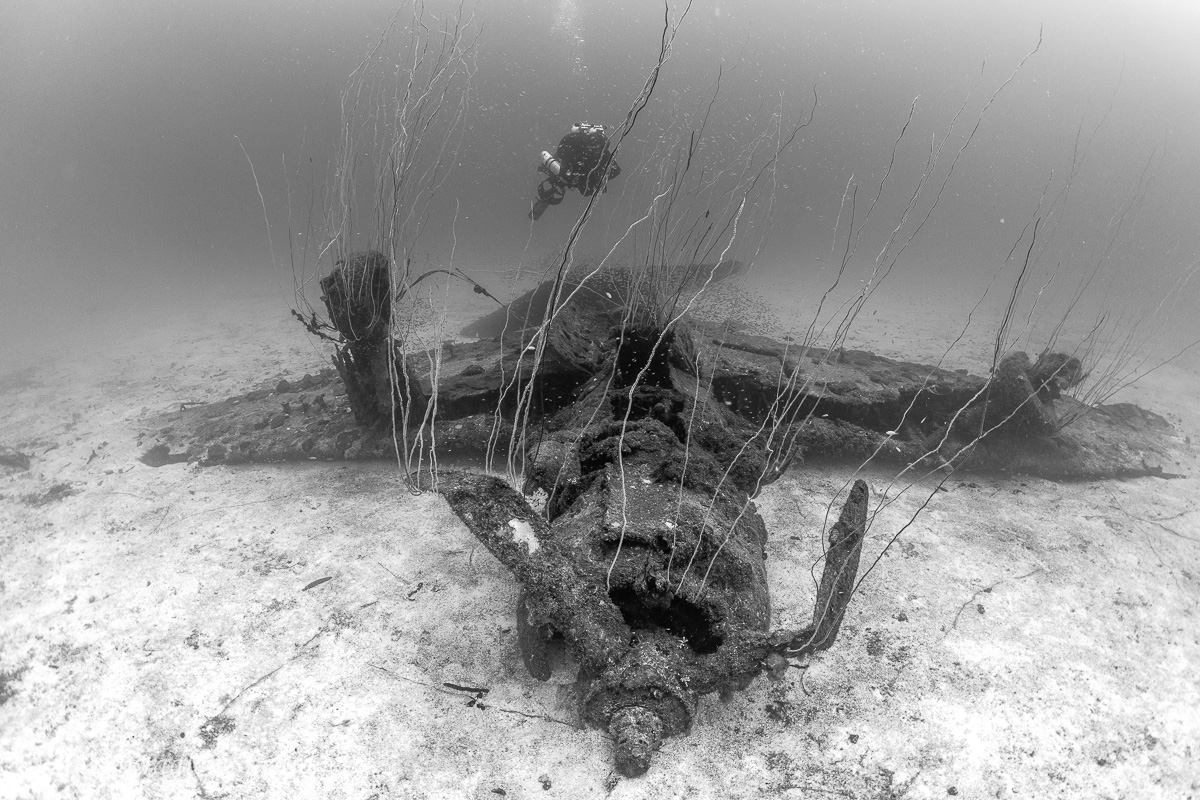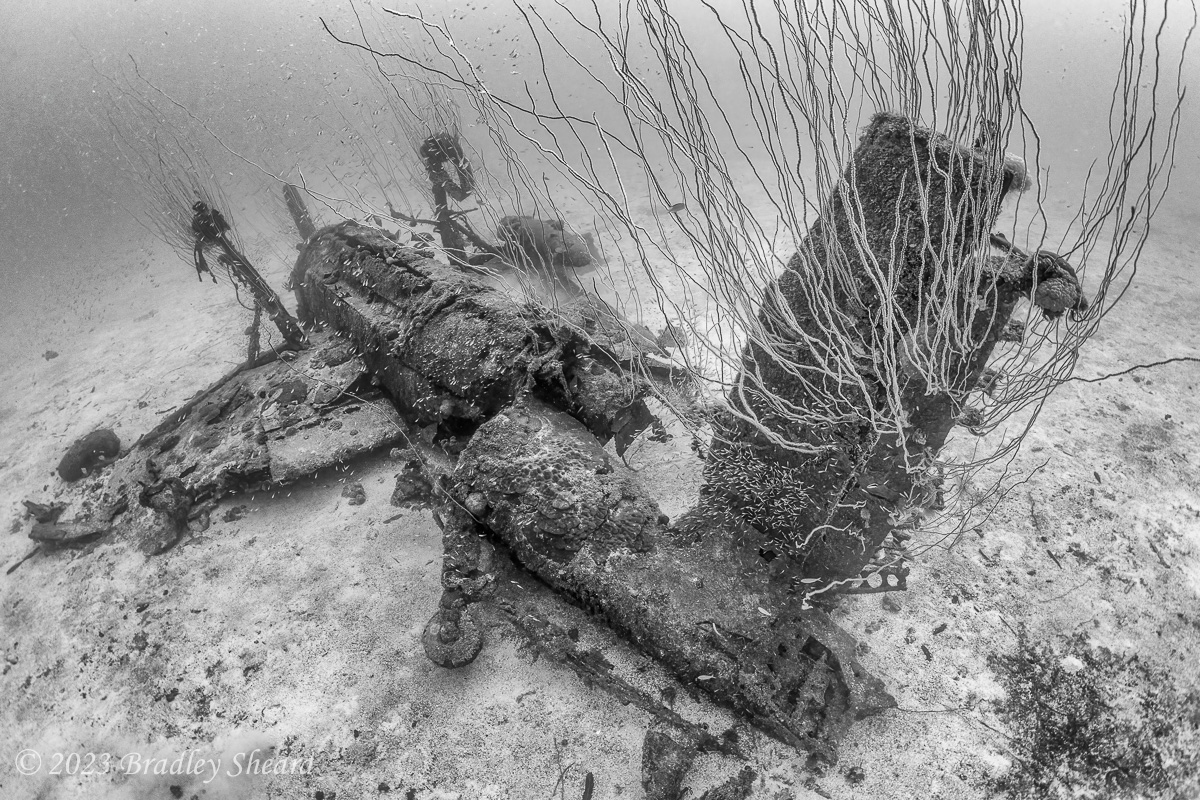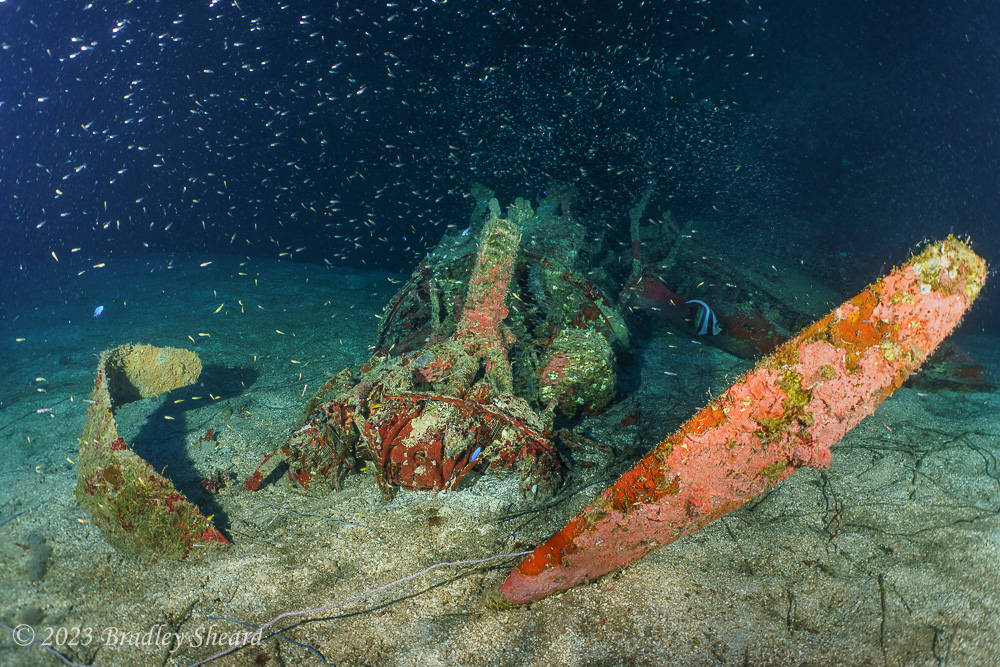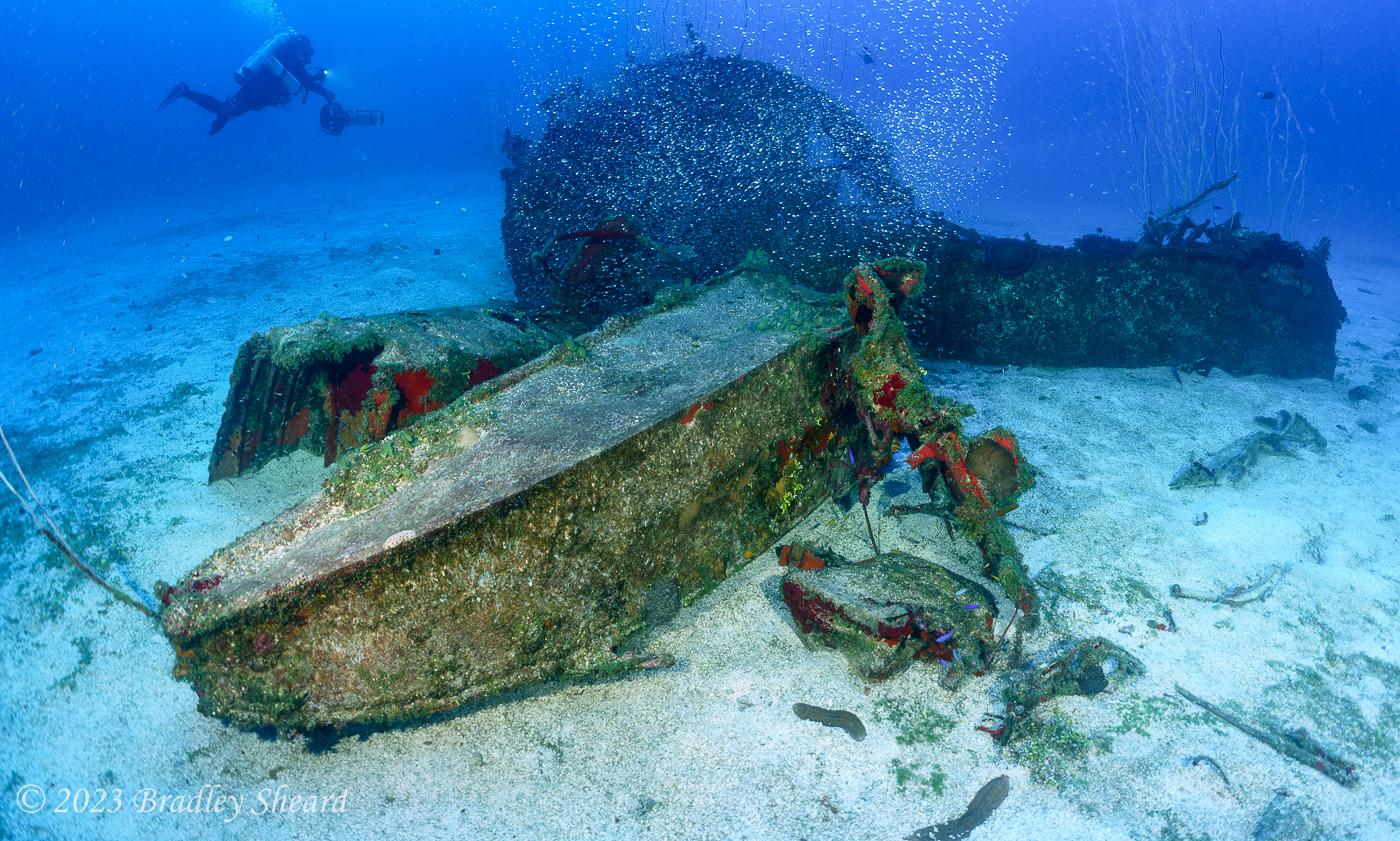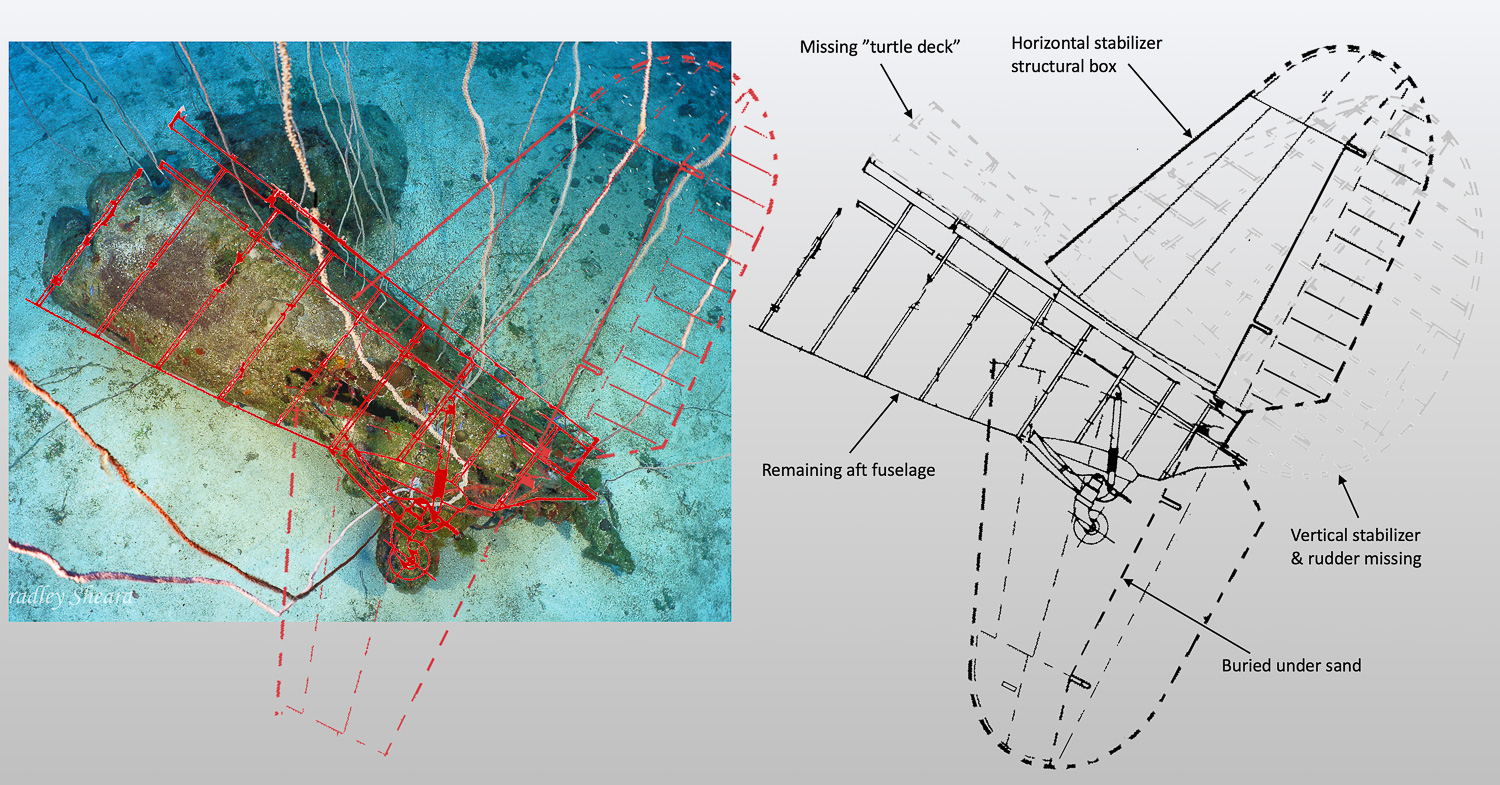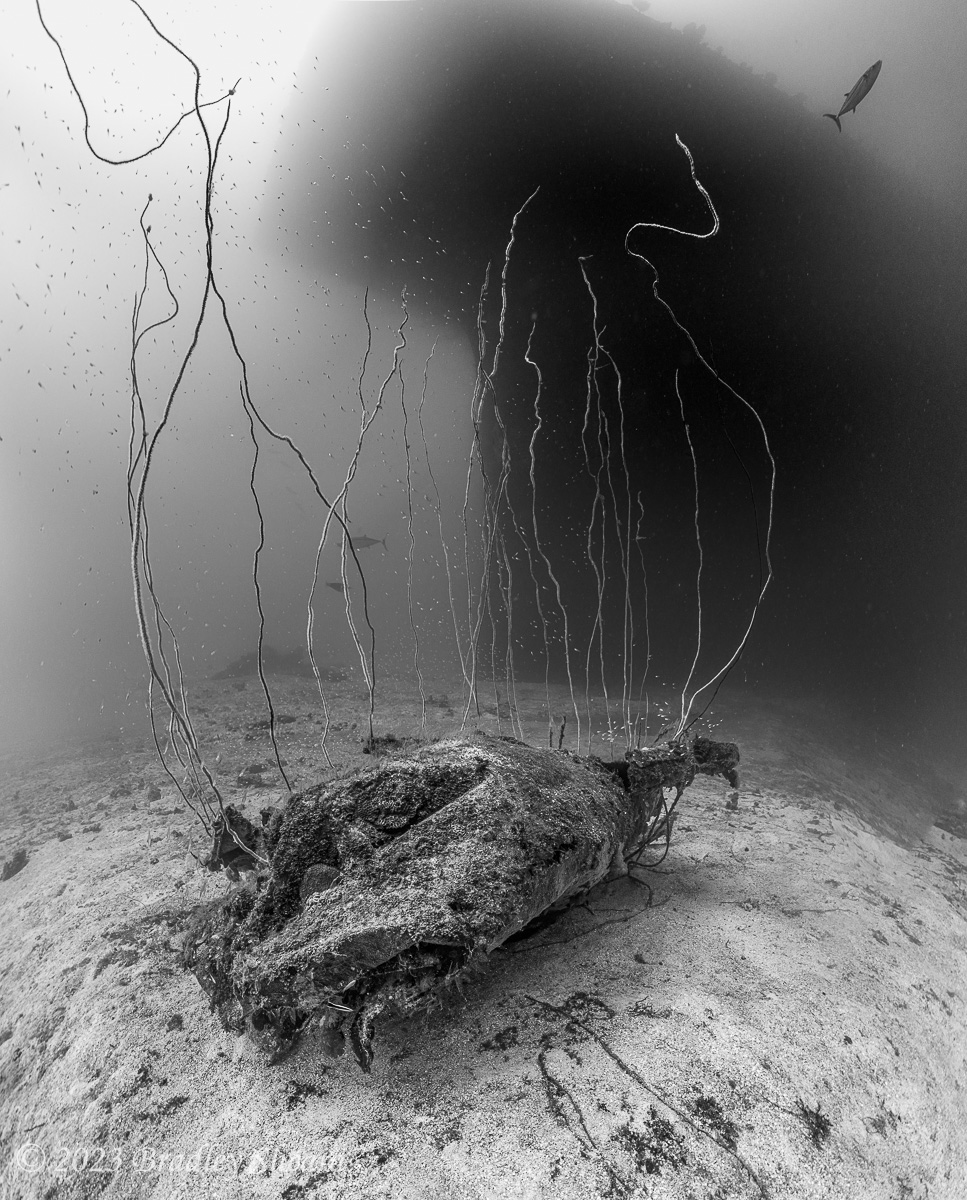 |
At the foot of the bow on the port side sits the tail section of an aircraft, including the tail landing gear and either the horizontal or vertical stabilizer, minus the rudder/elevators. The tail landing gear is in place, although covered in quite a bit of marine growth. There are only three reasonable possibilities for the identity of this tail section. On board the Saratoga during the Baker blast were six aircraft on the flight deck, three Curtiss SBF-4E Helldivers and three Grumman TBM-3E Avengers. A third possibility, which is a bit of a wildcard, is the possibility that it is a Grumman F6F-5 Hellcat. While there were no Hellcats on board the Saratoga during the Baker blast, 4 Hellcats were aboard the USS Independence during the Able blast. Two were on the flight deck and were reported as missing, blown overboard, after the blast. Two were on the hanger deck and reported as “completely demolished” with the fuselage broken aft of the cockpit, and were “jettisoned.” Note that after the Able blast, the Saratoga was repositioned quite close to where Independence was anchored during the Able blast, and it seems possible that Saratoga was coincidentally moored over this tail section, which could be an F6F Hellcat from the Independence.
What does appear to match this tail is a Grumman F6F-5 Hellcat fighter (note-not Helldiver). It had a retractable tail wheel that sits directly below the vertical fin. The lower fuselage also extends smoothly forward from the tail wheel without the deep belly of the Avenger, matching the tail at the foot of the Saratoga's bow. In addition, the shape of the vertical fin here seems to match that of the Hellcat (note that the rudder is missing). While there were no Hellcats on board the Saratoga during the Baker blast, 4 Hellcats were aboard the USS Independence during the Able blast. Two were on the flight deck and were reported as missing, blown overboard, after the blast. Two were on the hanger deck and reported as 'completely demolished' with the fuselage broken aft of the cockpit, and were 'jettisoned.' Note that after the Able blast, the Saratoga was repositioned quite close to where the Independence was anchored during the Able blast, and it seems likely that Saratoga was coincidentally moored over this tail section, which is likely an F6F Hellcat from the Independence.
|
My initial theory was that this was in fact a Grumman Hellcat. This was largely based on two things: from the forward end of the tail wreckage there appeared to be a landing gear door attached to the front landing gear strut, which would mean that the tail gear was retractable, which would eliminate the Helldiver, since it had a fixed tail gear. The second assumption was that the vertical fin was lying in the sand "above" the tail; this seemed logical since there was only one surface present, not the two that would constitute the horizontal stabilizer. The planform of the "vertical" seemed to match the planform of the vertical fin on the Hellcat. While the Avenger had a retractable tail wheel, the tail gear on the Avenger is further forward than the vertical fin, while this tail section has the tail gear directly below the fin. In addition, the deep, stepped belly of the Avenger is not evident here, as the fuselage lower surface extends smoothly forward of the tail wheel. All the above taken together led me to conclude that this was in fact the tail section of a Grumman Hellcat.
As time went on, Becky Kagan Schott introduced me to Brett Eldridge, who had been in Bikini several weeks after I had, and had constructed some fantastic 3D photometric models of the Saratoga's aircraft. We got to talking and comparing notes, and after much back-and-forth discussion and staring at pictures and schematics, finally came to the conclusion that this aircraft tail is actually from a Curtiss SBF-4E Helldiver. As it turns out, the "fin" present appears to be one-half of the horizontal stabilizer, with the other half covered with sand, and not the vertical fin of the aircraft. What I had thought was a landing gear door is apparently the front end of the Helldiver tail fairing; seen from the side (above the wreck) the tail wheel fairing seems to match almost perfectly with the Helldiver fairing, and the "fin" seems to match almost perfectly with the planform of the structural portion of the horizontal stabilizer of a Helldiver.
Eventually we came to the conclusion that we were looking at the horizontal stabilizer, not the vertical fin, and that it lies under the fuselage and the other half is (likely) buried under the sand. This makes a lot of sense; it was bothersome all along that there would be a vertical fin and no trace of the horizontal stabilizer. Referring to the Helldiver on the starboard side of the bow, this is the reverse of what you see, the vertical is gone with no trace, and the entire horizontal is intact. The horizontal stabilizer is built as one piece from side to side. It is then attached to the flat deck of the fuselage aft of the "turtle deck," and then the vertical gets attached above that. So it would have been "disassembled" in reverse order, the vertical getting ripped off, what's left lands upside down and breaks the horizontal stabilizer-fuselage joint in the process and over time the other half of the horizontal gets buried under the sand. The missing part of the fuselage that was above the stabilizer makes the remaining fuselage appear much sleeker, so you don't really see the deep belly of the Helldiver. Since this tail section on the port bow is almost certainly that of a Helldiver, and there is a partially crushed Helldiver beneath the port forward gun tub, it would seem logical that these are two pieces of the same aircraft, either SN 31853 or 31839, which were located midships on the flight deck during the Baker blast.
|



